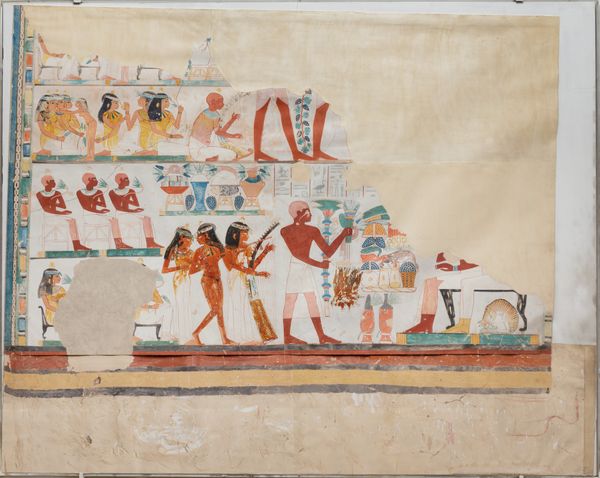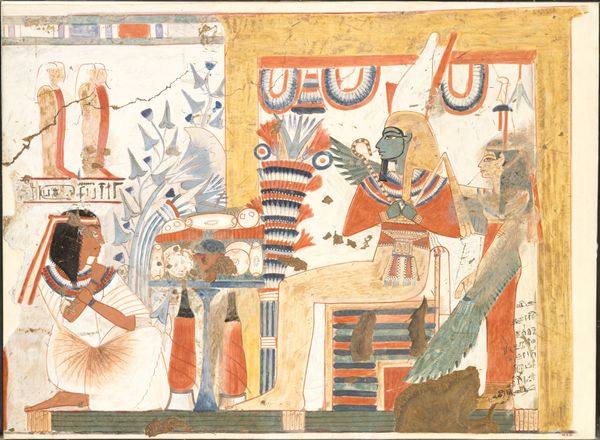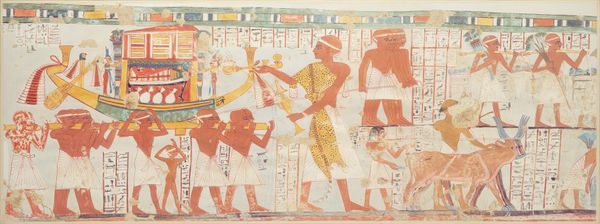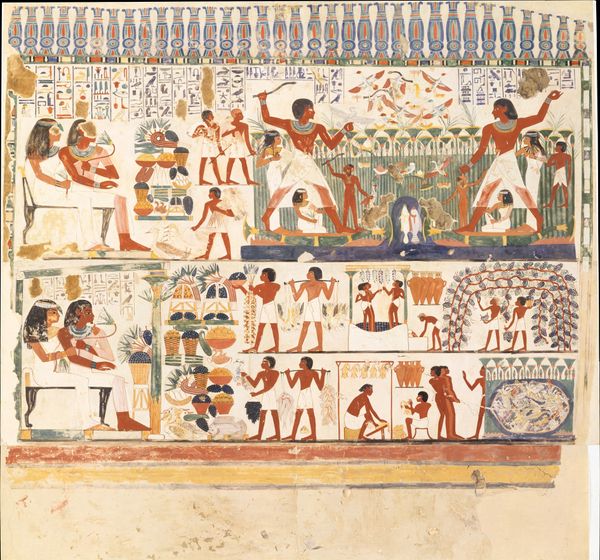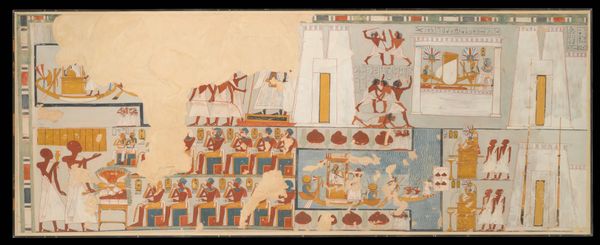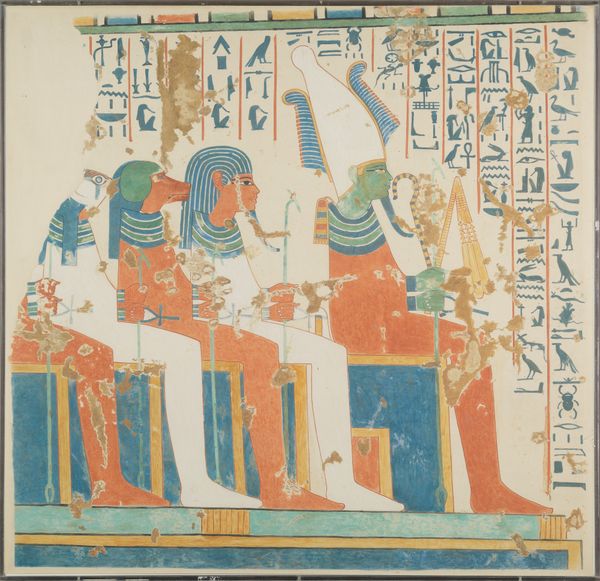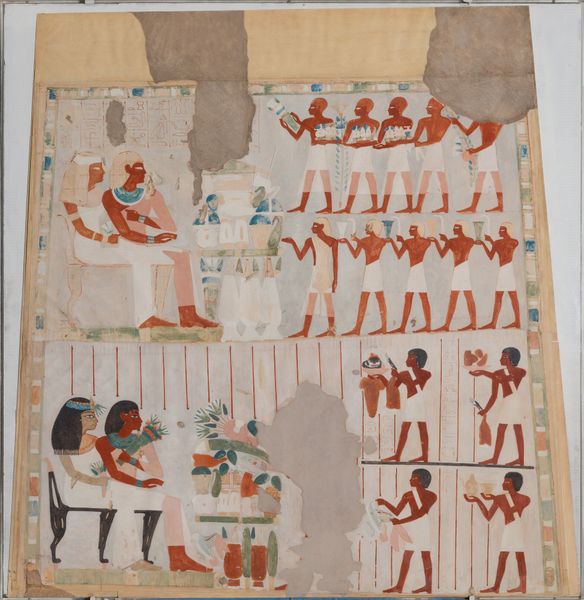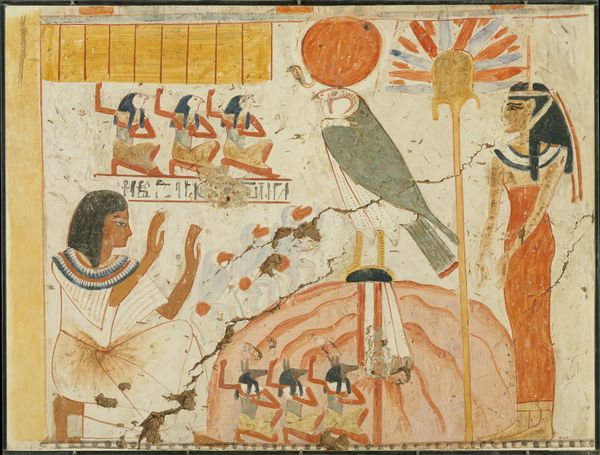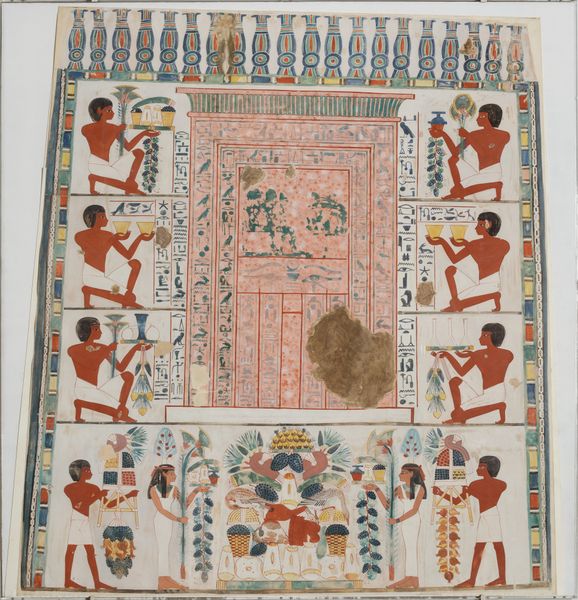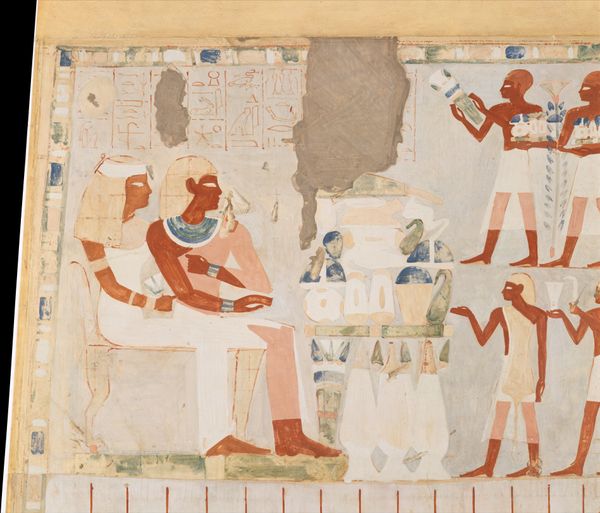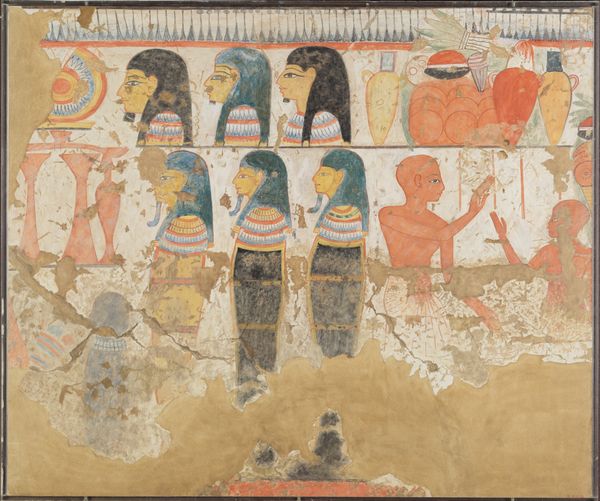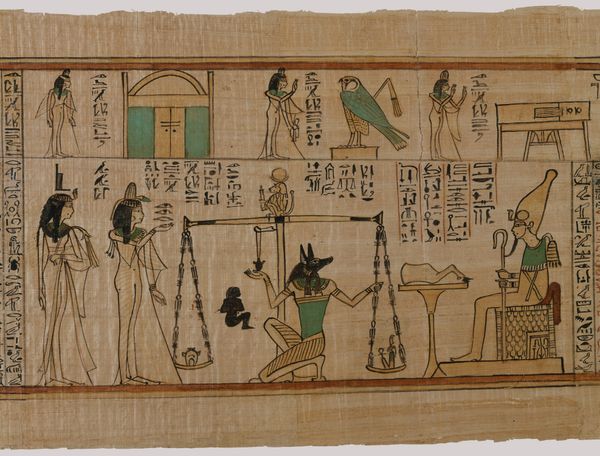
The Barque of Amun Arriving at the West Bank of Thebes 1295 BC
0:00
0:00
watercolor, ink
#
water colours
#
narrative-art
#
landscape
#
ancient-egyptian-art
#
figuration
#
oil painting
#
watercolor
#
ink
#
ancient-mediterranean
#
history-painting
Dimensions: Facsimile: H. 77 × W. 131 cm (30 5/16 × 51 9/16 in.), scale 1:1, Framed: H. 78.2 × W. 133 cm (30 13/16 × 52 3/8 in.)
Copyright: Public Domain
Editor: So, this is "The Barque of Amun Arriving at the West Bank of Thebes," created around 1295 BC. It’s watercolor and ink on papyrus. It’s incredibly detailed. The colors are muted, almost like aged silk. What draws your eye when you look at this piece? Curator: Immediately, I'm drawn to the organization of labor depicted here. Look at how the human figure is repeated across different levels of the composition – some are pulling ropes, others are carrying the god Amun, others on the barque. The sheer amount of manpower involved speaks volumes about the society that produced this. Editor: I see what you mean. It is repetitive labor, almost. Is that important? Curator: Exactly. The repeated gestures and movements point to the regimented social structure of ancient Egypt and how labor was organized for religious purposes. What tools, what kind of materials, were used in making the vessels and the clothing of those pulling? Editor: The process of creating the ink and the watercolors used, especially how the pigments were derived from the earth...that must have held significant meaning itself. Curator: Indeed! It connects directly to the land, the very source of their survival. This reinforces that relationship between the materials, labor, and the religious function they served. Every aspect – from the sourcing of materials to the depiction of repetitive action – reinforces the structure of ancient Egyptian life. What do you make of that now, considering the artist involved? Editor: That changes my understanding of it. I was initially focused on just the scene depicted but now I'm more intrigued by what this scene tells us about Egyptian society and its organization. It also makes me wonder about the cost of production of such things in human energy! Curator: Precisely! And that connection between labor and its material consequence becomes profoundly interesting.
Comments
No comments
Be the first to comment and join the conversation on the ultimate creative platform.
